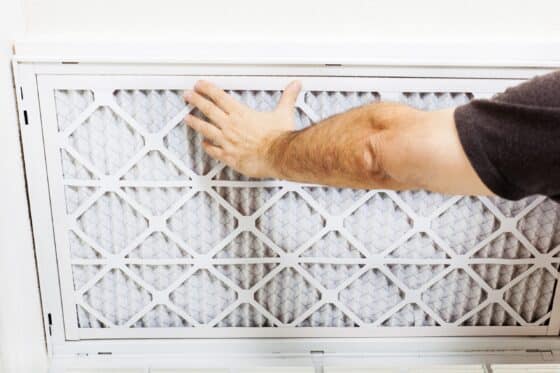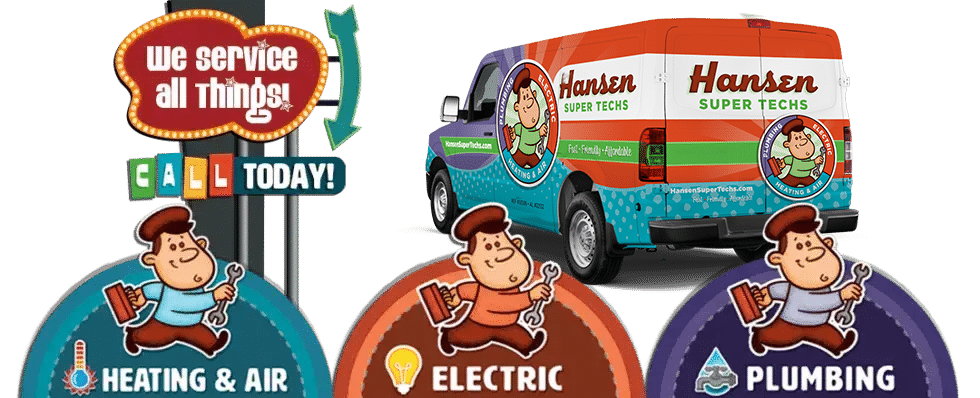10 Tips to Prepare Your HVAC for Spring

The spring season around Mobile, AL is a pleasant experience with the promise of spending time outside and enjoying your air conditioning when the weather warms up. Making sure your HVAC system is ready for the warm weather takes more than simply changing its operational mode. Follow these 10 tips to prepare your system, and know that it’ll be ready to handle whatever mother nature throws at you.
1. Check Your Air Filter
Air filters tend to get clogged more quickly over the winter due to the dry conditions. To make sure your system is ready to run efficiently, plan to replace your filter before switching on your air conditioner.
If you’re running the standard flat fiberglass filters, consider looking for an upgrade. Even changing to a pleated design removes more contaminants from the air and helps your filter last longer because there is now more surface area in the design.
If you’ve changed your filter recently, check it to make sure it’s in good condition. Then, gently vacuum the surface dirt and dust to give it a preseason efficiency boost.
2. Inspect Your Condensing Unit
The condensing unit is what sits outside your home and is responsible for exhausting the heat that the refrigerant absorbed from inside your home. It’s relatively easy for this unit to become damaged over the winter due to ice and blowing debris.
Start by removing the cover if you put one over it for the winter. Next, check for physical damage to the unit, including dents and cracks in the housing. Keep an eye open for rust on the unit as well, which can indicate corrosion inside the unit. It could also indicate damage to the condensing coil, caused by water freezing in the coil fins, bending them out of place.
3. Clear the Area Around Your Outdoor Unit
While you’re inspecting your condensing unit, clear the surrounding area. To work properly, the unit must draw air in, and then vent it out again. If there’s debris or anything else too close to the unit, it’ll prevent that air from circulating effectively.
To make sure it’s ready, clear the area, giving a 12-inch clearance both around and above the unit. Things that commonly restrict the airflow include grass, weeds, vines, leaves, and branches, along with trees and shrubs that have grown too close. Clearing these issues early ensures that you’ll have plenty of cool air once the weather turns hot.
4. Check Your Thermostat
The thermostat controls the entire system, and so it’s important to make sure it’s working properly as well. Most thermostats are powered by batteries, which will need routine replacement. Plan to install new batteries when you change your system’s operational mode.
While you’re working on your thermostat, plan to check your programs. When you switch to air conditioning, you’ll want to adjust your temperature up so that you’re not keeping your home as cool as you do in the winter. Consider the times you have the programs set to run over the winter, and adjust them as needed to meet your summer schedule.
Your thermostat has an expected service life of 10 to 15 years. As it nears this age, the temperature sensors stop operating as effectively. If your thermostat is nearing the end of its life, consider upgrading. You may want to look at more robust programming options or even a smart thermostat.
5. Open Your Windows
While the weather is nice, open your windows, and air out your home. This helps improve the air quality, allowing airborne contaminants to easily vent out, along with built-up household vapors. Venting in the spring helps ease the strain on your HVAC system and makes your air healthier to breathe.
6. Upgrade Your Ventilation
Aside from your windows, your home needs regular ventilation when it’s otherwise sealed to keep the air from becoming stale and unhealthy. This can be either natural or mechanical ventilation. Natural ventilation relies on normal air movement through intake and output vents, like under your eaves and through the ventilation hats on your roof.
Mechanical ventilation uses fans to move air through your home’s spaces. If you have mechanical ventilation already installed, then you’ll want to inspect it to make sure it’s still working properly.
You may want to consider upgrading to an Energy Recovery Ventilator (ERV). This unit has a small heat exchanger in it to preheat or to precool the air coming into your home with the air venting out. This reduces the strain on your system, lowering your heating and cooling costs.
7. Inspect and Seal Your Ducts
Your ducts will eventually develop small leaks due to vibration while the system runs. These leaks allow the air you’ve just paid to cool to escape before ever entering your home, reducing your system’s efficiency.
Have your ducts inspected to see if leaking is an issue. If it is, have them professionally sealed to ensure your system is operating at its highest efficiency. Give it a boost by insulating the ducts that run through unserviced areas to prevent heat transfer through the ducts themselves.
8. Don’t Forget Your Vents
Your vents play a particularly important role in your HVAC system, creating the circulation needed to move the conditioned air around your home. Take a few minutes to wipe down each of your vents with a damp cloth to prevent dust and dirt from falling into your ducts and clogging them.
While you’re there, make sure each vent is open and has the proper clearance. Without at least a 2-inch clearance above and around each one, the air cannot flow up to create the circulation needed. If you find you’ve covered some of your vents, consider rearranging your furniture to give the appropriate clearance and to restore your system’s efficiency.
9. Prepare Your Ceiling Fan
Your ceiling fan helps you feel more comfortable in your home during the summer months thanks to the windchill effect it provides. When this is spinning correctly, it can make the air in your home feel about two degrees cooler, which helps you feel more comfortable at a slightly higher thermostat setting.
To make sure the ceiling fan is ready for the spring, turn it off, and clean the dust from the blades. Once you do, flip the switch on the side of the housing to ensure it’s spinning the proper direction. Over the warmer months, it should spin in a counterclockwise direction to provide the desired windchill.
10. Schedule Spring Maintenance
Call and schedule your spring maintenance before the heat of the summer arrives. Maintenance is the single most important aspect of preparing your system to run at its intended efficiency. During your maintenance visit, a technician cleans, tightens, and tests the system to ensure everything operates optimally, reducing your utility expenses.
Since 2006, Hansen Heating & Air has been the go-to service provider for residents around Mobile. Our expert technicians are sought after for their reliable heating and air conditioning repairs, installation, and maintenance together with indoor air quality and generator services. Call to schedule your spring maintenance appointment with one of our friendly technicians today.


